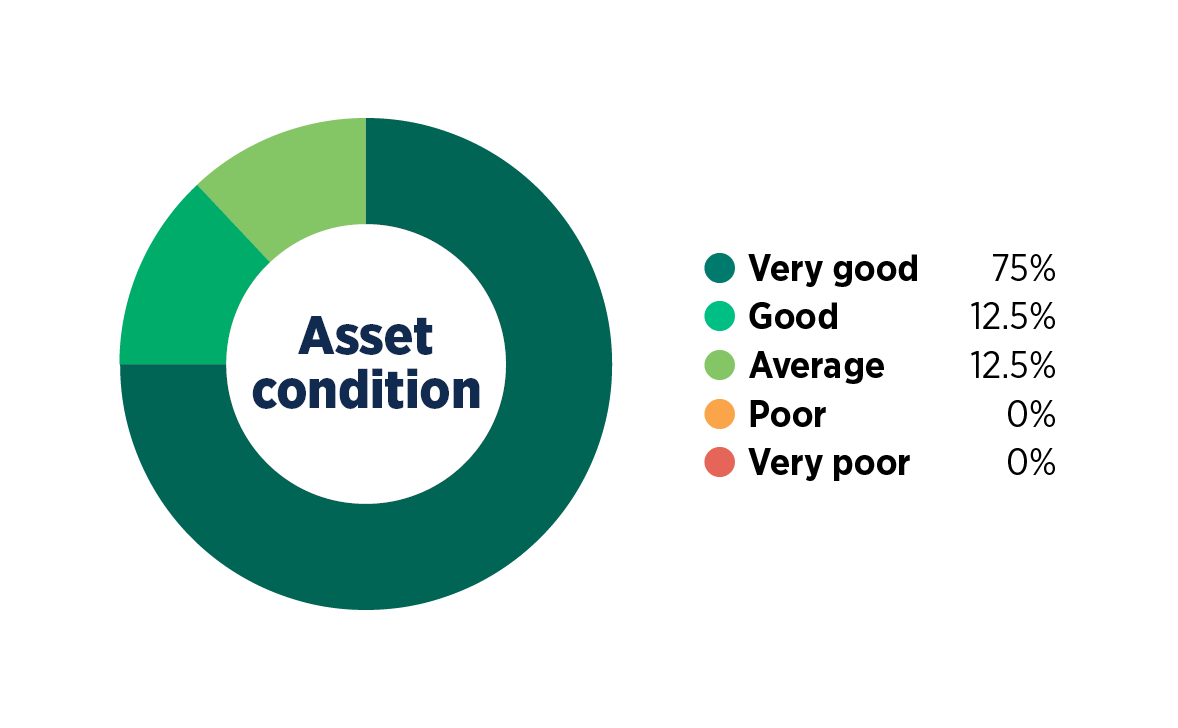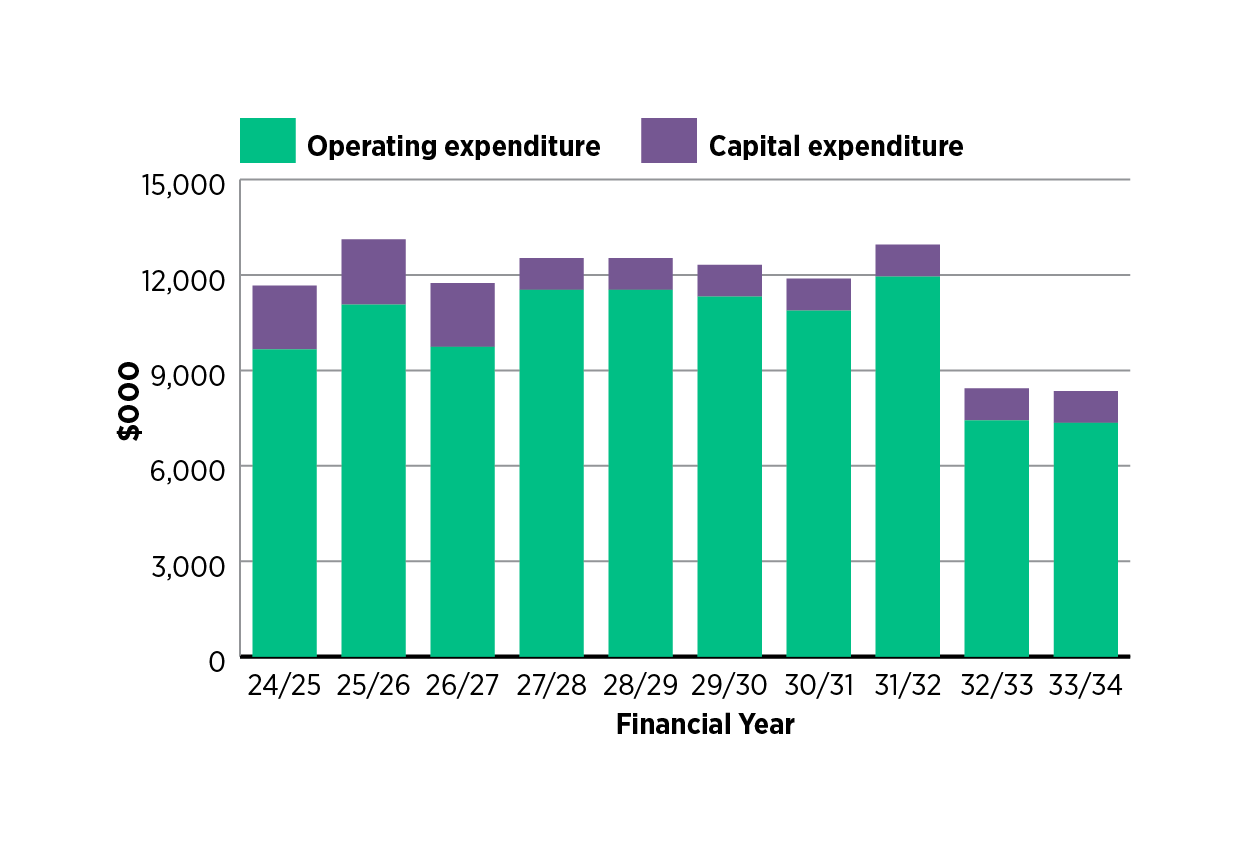Below is a summary of the Rotorua Te Arawa Lakes Asset Management Plan (AMP).
It outlines a 10-year strategy that focuses on the assets associated with the restoration of water quality for the Rotorua Lakes, which are collectively valued at nearly $16M (as of 30 June 2024), as well as the management of specific lake levels.
Activity and Asset Overview (Part 3)
We help manage 12 lakes on behalf of the community, through the Rotorua Te Arawa Lakes Programme.
We implement work for the Rotorua Te Arawa Lakes Programme, agreed by the Programme partners (Te Arawa Lakes Trust and Rotorua Lakes Council). Some of this work is part-funded through a Deed of Funding Agreement with Central Government.
All 12 lakes have targets for water quality specified in the Natural Resources Plan (NRP) for the region, and are of regional and national significance, as well as being taonga to the people of Te Arawa.
Operations include in-lake and in-stream interventions (to improve water quality) and lake level management and monitoring.
A summary of the asset portfolio is as follows:

Asset Condition (Part 3, Section 4)
Asset condition is determined through a visual inspection by staff, which is recorded and measured using a 1-5 rating system (1 is an asset that is in very good condition and 5 is very poor condition). These assessments are undertaken every three years. Assets in poor to very poor condition are prioritised for maintenance or renewal.
No assets in the Rotorua Te Arawa Lakes Programme are rated in poor condition.

Levels of Service (LoS) (Part 4)
LoS are performance goals for the Regional Council for a particular activity. These are agreed on with the community through the Long Term Plan consultation process and are aligned to the community outcomes. They also provide the basis for lifecycle management strategies and work programmes for staff to make sure the LoS are achieved.
The key objective for this Activity is ‘to meet community expectations for water quality in each lake’. Customer values provide the cornerstone to the development of LoS from both a customer and technical point of view. These values are accessibility, quality, safety, community engagement and sustainability. LoS to meet these include protecting homes from flooding, by keeping lakes in operational range and avoiding low levels; maintain plant operation to avoid algal blooms; improve indigenous biodiversity and waterbodies; and operation and maintenance of the Ōhau diversion wall to protect Lake Rotoiti.
While most LoS were met, extremely high rainfall during the winter months meant that lake level targets (particularly at Lake Ōkāreka) were exceeded. However, the operational improvements implemented over the past five years provided a significant improvement to the protection of the local infrastructure and housing and prevented any significant property damage, that was experienced after the 2017 flooding.
The set target for this LoS is 90% and is also currently being achieved.
Future Demand Drivers and Management (Part 5)
Continuous improvement and future planning are a critical part of asset management. For this activity, we have identified three future demand drivers: Climate change, legislation and regulatory, and stakeholder expectations.
In the AMP, we assess how these demand drivers may impact our assets and services, and put management strategies in place to ensure we can adapt to meet the current and future demands of the community. This way we can optimise our current assets and resources, improve our ways of working, and adapt to a changing climate.
Lifecycle Management (Part 6)
Lifecycle management determines the best operational and capital investment to deliver LoS, and uses this as a basis for long-term financial forecasts for the Long Term Plan. T
he activity’s lifecycle management programme covers the three categories that are necessary to manage an asset over its whole life and deliver required levels of service. These are operations and maintenance (on-going work required to keep assets going), renewals (major works that restores, rehabilitates, replaces or renews an existing asset to like-new condition), and new capital works (creating new assets).
Risk Management (Part 7)
The risk management process for the Activity includes identifying, assessing, evaluating, treating, and continually monitoring key risks.
Three key risks identified include:
- Impacts of climate change.
- Community expectations and cultural impacts.
- Programme cost and timeframe.
Financial Planning (Part 8)
The graph below highlights the forecast financial projections for the planned operational (operation and maintenance) and capital expenditure (renewal and new) for the Rotorua Te Arawa Lakes assets. The target is to retain relatively stable levels of operating expenditures for all asset types. Funding for operational activities comes entirely from general funds. Capital expenditure for new assets is typically not covered by rates but is instead spread over time using reserves and/or borrowing, with net operating surpluses contributing to specific asset replacement reserves.

Improvement Plan (Part 9, section 9.2)
A central theme to all our AMPs is continuous improvement. Twelve improvement items have been identified and compiled into a plan for the next three years. Key priorities include repairs to corrosion of the Ōhau diversion wall, improved spatial data on the assets, additional maintenance planning, updated asset register and condition data, and identifying critical assets.


